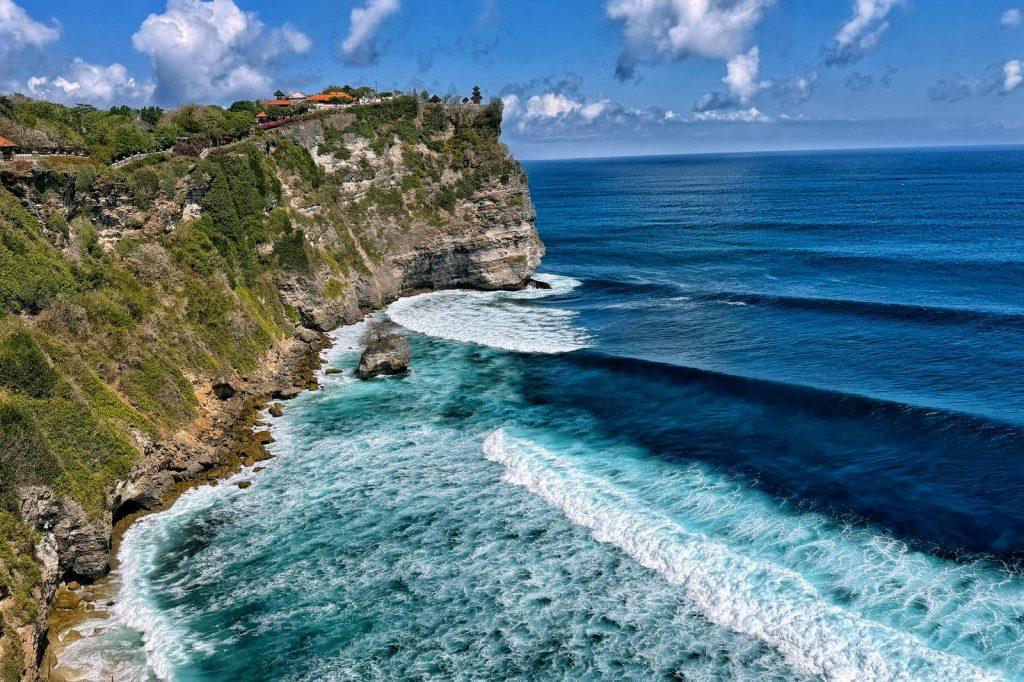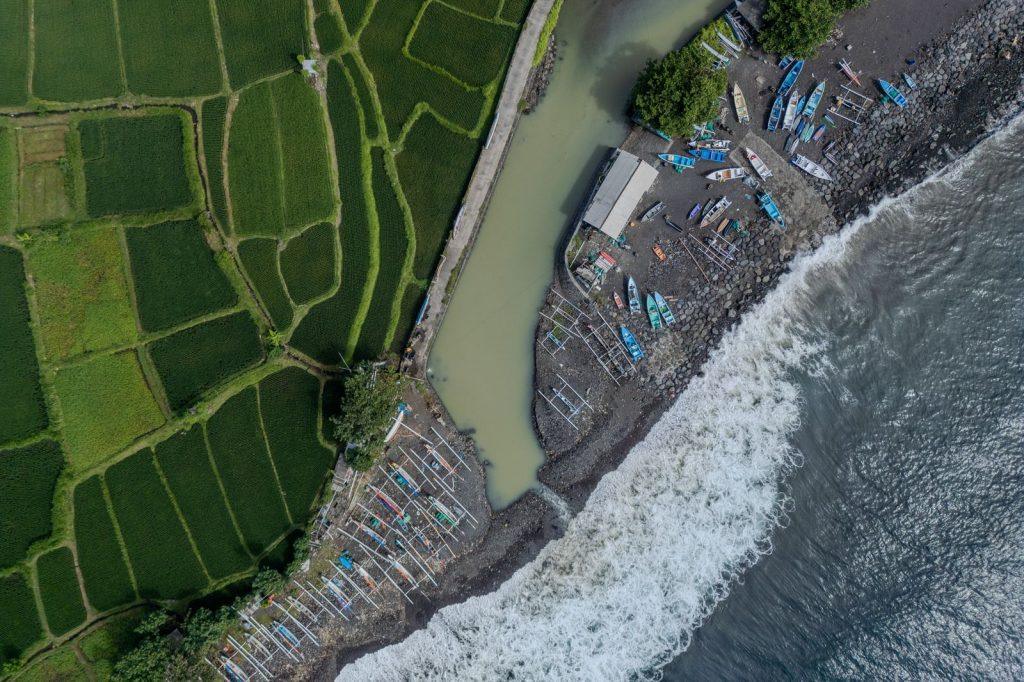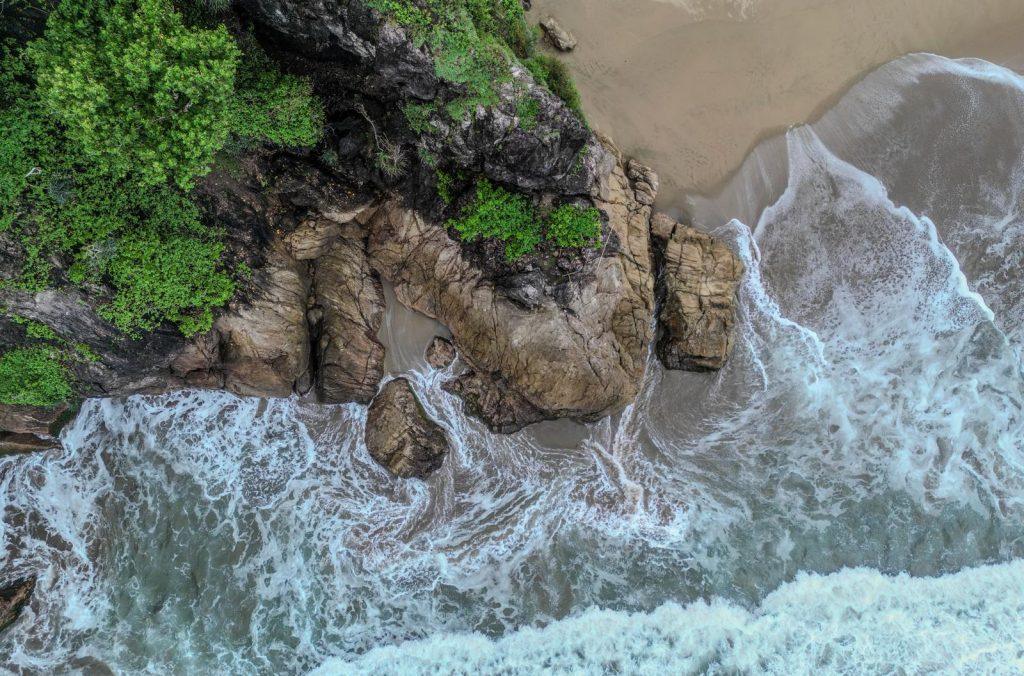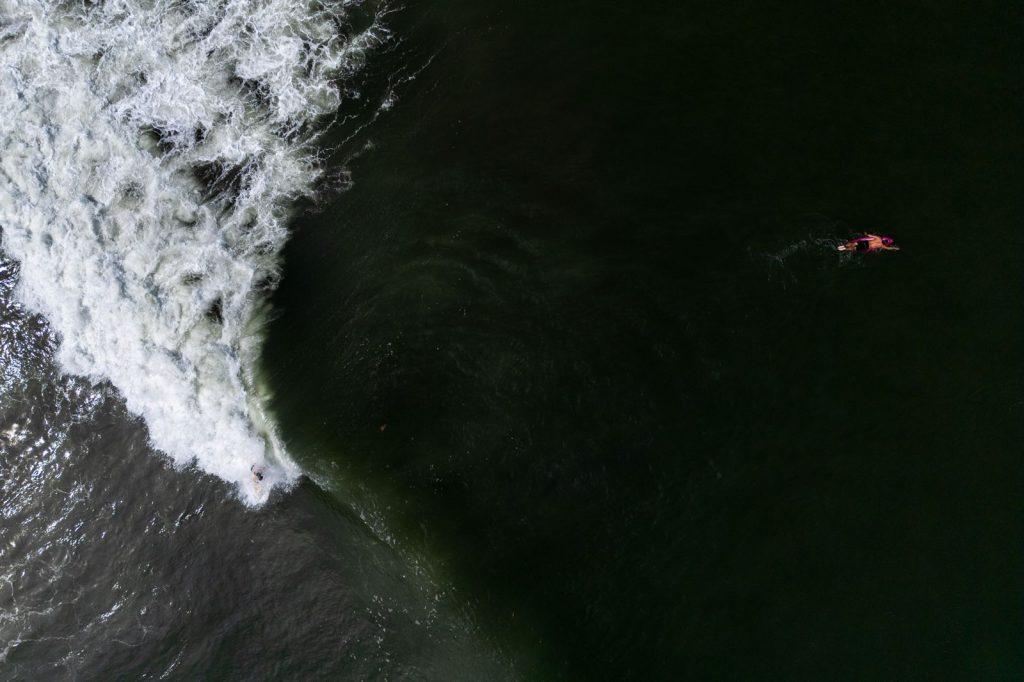Behind every wave lies a precise mechanism. First, the wind transmits its energy to the ocean’s surface. Next, the swell travels thousands of kilometers before transforming, sometimes violently, upon reaching the coast. Finally, the seafloor sculpts its shape and dictates its power. Understanding this process reveals a universal language that links climates, seasons, and shorelines.
Article and photographs by Damien Lafon.

The ocean in motion, a force we cannot ignore
On the horizon, a dark line suddenly appears. Quickly, the ocean rises and unleashes its energy toward the shore. Behind this spectacle, a subtle mechanism takes place between wind, water, and reliefs. Yet waves are not merely a fascinating backdrop. They embody a planetary language, connecting climates, seasons, and coasts. Understanding their formation also means grasping the fragile balance that unites Earth and ocean.
How waves are formed: the essential role of wind
First, the wind plays a central role. As it sweeps across the surface, it transfers its energy to water molecules. Small ripples appear, then grow with the strength and duration of the gust. Thus, the Indian Ocean generates massive swells during winter storms. These swells then travel toward the tropical shores of Indonesia. Every observed wave tells the hidden story of a distant wind, turned into a messenger of the atmosphere.
From distant swell to breaking waves, a spectacular metamorphosis
Next, waves travel thousands of kilometers in the form of swell. Energy moves discreetly, sometimes for several weeks. However, once they encounter shallow seafloors near the coast, waves slow down. Their height increases, their crest rises, and then they finally break. In Nazaré, Portugal, the seafloor channels this energy, producing giant waves. Elsewhere, like in Tahiti, coral reefs shape hollow and dangerous waves, both feared and admired by surfers.
Did you know?
Waves in Nazaré can reach over 30 meters, thanks to an exceptional underwater canyon.

The decisive influence of the seafloor on ocean waves
However, not all coasts generate the same waves. Their shape depends closely on the underwater topography. A sandy shelf produces gentle, regular waves. In contrast, a steep reef creates powerful, hollow waves. The mythical Teahupo’o wave in Polynesia, for example, results from a very particular reef. Furthermore, bays, headlands, and cliffs redirect swells and carve unique coastal landscapes. Each shore tells both a geological and oceanic story.
A planetary dynamic connecting waves, seasons, and climate
Moreover, waves reveal the interconnection of Earth’s systems. Winds are driven by temperature differences between continents and oceans. Thus, North Pacific winter storms fuel Hawaii’s legendary surf. Further south, the austral winter sends long swells toward Bali’s beaches. Each visible breaker results from a global climatic mechanism. Waves therefore become living witnesses of seasons and planetary upheavals.
Understanding how waves are formed to protect the ocean
Finally, analyzing how waves are formed goes beyond scientific curiosity. Predicting coastal erosion, developing marine energy, and protecting shorelines all depend on this knowledge. Furthermore, waves reflect the health of our oceans in the face of climate disruption. They remind us that the ocean remains a key actor in our future. Watching a wave means contemplating Earth’s beauty, fragility, and strength.
Did you know?
Some swells travel more than 10,000 kilometers before reaching a distant shore.

Follow us on Instagram and Facebook to keep up to date and support our media at www.helloasso.com
This article may be of interest to you: Climate: What Is a Marine Heatwave?
